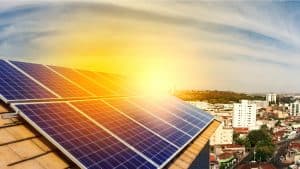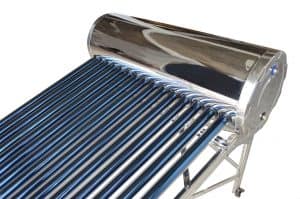How to Get Renewable Energy Set Up at Home Quickly
by Jane Marsh
Interest in renewables has gained traction as energy costs have left a dent in most people’s wallets. Amid the global energy crisis and rising concerns regarding global energy security, the International Energy Agency expects renewables to increase by 85% from the last five years to 2,382.9 gigawatts by 2027.
Residential renewables, in particular, have also become increasingly popular as homeowners seek ways to reduce energy consumption at home and lower their utility bills. With the latest provisions and tax credits for renewable energy customers under the Inflation Reduction Act, more American homeowners will likely want to set up renewable energy at home quickly.
Preparing for Residential Renewable Energy
Preparation is vital for fast, efficient renewable energy setup at home. A good starting point is to research your existing utility providers. Determine whether you live in a deregulated market to select providers of your choosing. Although you intend to install renewables, you’ll likely stay connected to the grid as backup.
Calling an installer to conduct an electricity load analysis is also crucial for learning whether you might need a new roof for solar panels, how much energy your household consumes, and the best system options for renewable energy. Researching local zoning regulations and state and federal incentives for renewable energy will also save you time setting things up.
5 Ways to Implement Renewable Energy at Home
There are several ways to implement an alternative energy source at home — some projects are inexpensive and practical, too. However, a large-scale renewable setup will provide the best results. Here are five ways to transition your home to renewables for immediate energy savings.
-
Rooftop Solar

Solar panels have become as commonplace as traditional electricity. In 2020, 3.7% of single-family homes in the United States were solar-powered.
All homes require electricity to power lighting, appliances, electronic devices, and heating and cooling systems. However, conventional utilities — including oil and natural gas — produce ample fossil fuels and are costly. Solar panels correct this problem, providing cleaner power to your home and becoming carbon neutral over time.
Now is an excellent time to take advantage of the recent tax credits and state incentives for rooftop solar, extended until 2030. A single-family home will likely need 17–21 panels to meet electricity demands, but it ultimately depends on how much sun your house gets, where you live, annual energy consumption, and solar panel wattage.
-
Solar Water Heater

A solar water heater works similarly to solar panels, except solar power generation is isolated to your water heater. Solar water heaters use sunlight to push water throughout your home. Because it isn’t reliant on grid electricity, running and heating your water is much more cost-effective. They are also less expensive and easier to install than an entire rooftop solar panel system.
An Energy Star-certified solar water heater ensures the most significant energy efficiency. Homeowners can save $2,900 over its 20-year lifetime and divert 4,000 pounds of carbon dioxide from entering the atmosphere annually.
-
Solar Air Conditioning
Doesn’t it make sense to use solar-powered air conditioning when the sun is already beating down on the system? A solar air conditioning system is a good idea if you live in a sunny, warm climate and run the AC year-round.
Solar air conditioners are more expensive than standard systems — Angi says a unit costs about $3,400 to install. However, you make up for the steep price tag in energy savings.
Additionally, solar-powered air conditioning is eligible for energy tax credits under the new law. When you take advantage of financial incentives, solar air conditioners save you 40% or $46 monthly on utility bills.
-
Geothermal Power
Some homeowners prefer exploring alternative renewable energy sources that aren’t solar-powered. For example, you may want to use geothermal power to tap into energy from the Earth’s crust. The way to do this is to install a geothermal heat pump.
Geothermal heat pumps send refrigerants and water through looped pipes underground to a nearby structure. Unlike solar, geothermal power is more consistent. Earth’s internal temperatures remain at 72–74° Fahrenheit about 30–40 feet below, regardless of the weather aboveground.
-
Wind Turbines

Residential wind turbines are another alternative energy option for homeowners to set up at home. Your home could be a good candidate for wind energy if it meets the following criteria:
- Located in a windy area
- There’s ample space with flat land
- Local laws and zoning regulations allow tall structures
- You can disconnect from their current utility provider
- You understand your household’s energy needs
Residential wind turbines are usually 400 watts to 100 kilowatts to meet all or most of your home’s energy consumption requirements. An installer could provide you with more information regarding the necessary system for your home.
Save Energy by Setting Up Renewable Energy at Home
You might be one of many homeowners interested in setting up renewable energy at home — and rightfully so. Homeowners that set up renewables see significant savings on utility bills and improved well-being. Why should you spend so much on clean energy? By installing renewable energy, you can reap immediate benefits.
Article by Jane Marsh
Jane works as an environmental and energy writer. She is also the founder and editor-in-chief of